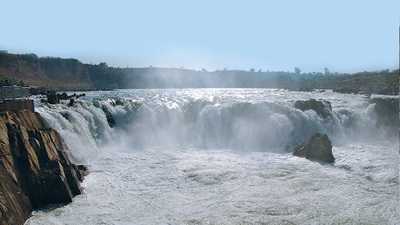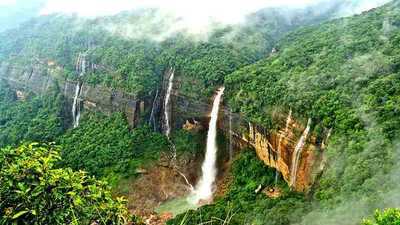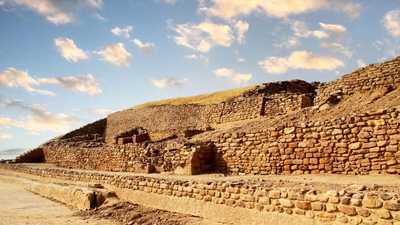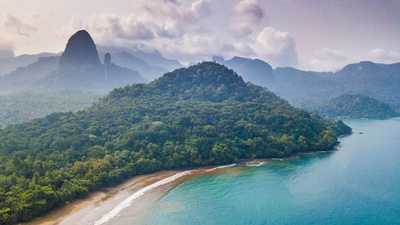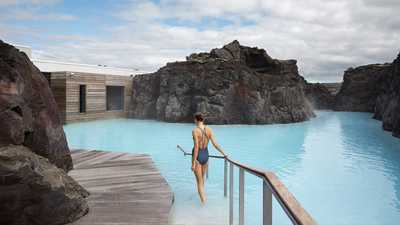Today marks a historic moment for Indian infrastructure, as Prime Minister Narendra Modi inaugurates the country's first vertical lift sea bridge—the New Pamban Bridge—linking Rameswaram to the mainland. The occasion, timed with the auspicious festival of Ram Navami, adds a spiritual resonance to a landmark feat of engineering.
Rameswaram is not just a town. It’s a place woven deeply into India’s mythological fabric. The Ramayana describes Lord Ram beginning the Ram Setu construction from nearby Dhanushkodi, building a bridge to Lanka. Now, over a hundred years after British engineers built the first Pamban rail bridge in 1914, a bold new chapter begins.
Designed to withstand the rough seas, cyclones, and corrosion of the region, the bridge uses stainless steel reinforcement, fully welded joints, and a special polysiloxane coating. It's also built three metres higher than the old bridge, improving sea clearance and enabling the passage of larger vessels without halting train movement.
“The harsh marine environment and growing transportation demands necessitated a modern solution,” said the Ministry in a statement. “In 2019, the Central government sanctioned the construction of a technologically advanced, future-ready replacement.”
Importantly, the bridge isn’t just a marvel of steel and paint—it’s a lifeline. For decades, the original bridge served pilgrims, tourists, and traders headed to Rameswaram. But time took its toll. The old Scherzer rolling lift span, while iconic, struggled under increasing pressure and worsening weather conditions.
The vertical lift span was launched using the 'Auto Launching Method based on Relationship Principle'—a technique designed by Suntech Construction Engineering Consultants and verified by IIT Madras. Segments were transported to Pamban, assembled on temporary platforms using Electric Overhead Travelling cranes, and welded inside insulated huts. The joints were later inspected by PAUT (Phased Array Ultrasonic Testing), and metalised for corrosion protection.
At around 1:30 pm, Modi will lay the foundation stone and dedicate rail and road projects worth over ₹8,300 crore to the nation. These include upgrades aimed at boosting connectivity and regional development in Tamil Nadu.
According to the Ministry of Railways, “By the early 21st century, the old bridge could no longer meet the demands of modern transportation.” It added that the new bridge “enhances connectivity while showcasing India's infrastructure capabilities in safety, durability, and innovation.”
With this launch, India joins a small league of nations boasting vertical lift sea bridges. Comparisons have already been drawn to the Golden Gate Bridge in the US, Tower Bridge in London, and the Oresund Bridge between Denmark and Sweden. But make no mistake—this one is uniquely Indian.
It’s not just about engineering. It’s about legacy, resilience, and the blending of mythology with modernity.
As the lift span rises today, it lifts more than metal. It lifts a nation’s pride.
Rameswaram is not just a town. It’s a place woven deeply into India’s mythological fabric. The Ramayana describes Lord Ram beginning the Ram Setu construction from nearby Dhanushkodi, building a bridge to Lanka. Now, over a hundred years after British engineers built the first Pamban rail bridge in 1914, a bold new chapter begins.
New Pamban Bridge Rameswaram: Built for the future
The ₹550 crore structure stretches 2.07 kilometres across the Palk Strait. But it’s the 72.5-metre vertical lift span, capable of rising 17 metres to allow maritime traffic, that sets this bridge apart. The Ministry of Railways calls it “a testament to India's engineering prowess and visionary infrastructure development.”Designed to withstand the rough seas, cyclones, and corrosion of the region, the bridge uses stainless steel reinforcement, fully welded joints, and a special polysiloxane coating. It's also built three metres higher than the old bridge, improving sea clearance and enabling the passage of larger vessels without halting train movement.
“The harsh marine environment and growing transportation demands necessitated a modern solution,” said the Ministry in a statement. “In 2019, the Central government sanctioned the construction of a technologically advanced, future-ready replacement.”
Pamban Bridge: Dual-track ready, but more than just tech
Though currently fitted with a single line, the bridge is structurally ready for two rail tracks. Its approach comprises 88 spans using 18.3-metre steel plate girders. With durability as the top priority, the substructure is expected to last over 100 years.Importantly, the bridge isn’t just a marvel of steel and paint—it’s a lifeline. For decades, the original bridge served pilgrims, tourists, and traders headed to Rameswaram. But time took its toll. The old Scherzer rolling lift span, while iconic, struggled under increasing pressure and worsening weather conditions.
Innovation born of challenge
The bridge’s construction was no simple feat. Rail Vikas Nigam Limited (RVNL), a Navratna PSU under the Ministry of Railways, navigated through cyclones, seismic threats, and logistical nightmares to complete the job. The rough waters of the Palk Strait tested every plan.The vertical lift span was launched using the 'Auto Launching Method based on Relationship Principle'—a technique designed by Suntech Construction Engineering Consultants and verified by IIT Madras. Segments were transported to Pamban, assembled on temporary platforms using Electric Overhead Travelling cranes, and welded inside insulated huts. The joints were later inspected by PAUT (Phased Array Ultrasonic Testing), and metalised for corrosion protection.
A spectacle of speed and ceremony
As the lift span rises during the ceremony, a new Coast Guard ship will sail through. PM Modi will also flag off the new Rameswaram-Tambaram train service, connecting the temple town to Chennai more efficiently. Following this, he is expected to visit the famous Ramanathaswamy temple at 12:45 pm for darshan and pooja.At around 1:30 pm, Modi will lay the foundation stone and dedicate rail and road projects worth over ₹8,300 crore to the nation. These include upgrades aimed at boosting connectivity and regional development in Tamil Nadu.
From colonial steel to modern might
The original Pamban Bridge, built in 1914, was India’s first sea bridge and an engineering marvel of its time. But the demands of the 21st century left it behind. With higher speeds, greater loads, and increased maritime traffic, the time had come for a next-generation structure.According to the Ministry of Railways, “By the early 21st century, the old bridge could no longer meet the demands of modern transportation.” It added that the new bridge “enhances connectivity while showcasing India's infrastructure capabilities in safety, durability, and innovation.”
With this launch, India joins a small league of nations boasting vertical lift sea bridges. Comparisons have already been drawn to the Golden Gate Bridge in the US, Tower Bridge in London, and the Oresund Bridge between Denmark and Sweden. But make no mistake—this one is uniquely Indian.
It’s not just about engineering. It’s about legacy, resilience, and the blending of mythology with modernity.
As the lift span rises today, it lifts more than metal. It lifts a nation’s pride.




